Soil plays a vital role for all plants. If you want your Haworthia to stay healthy in the long run, you must give special attention to the growing medium. Haworthia will live for long in a well-drained growing medium.
So, in this article, we shall learn, what soil to use for haworthia.
In general, haworthia prefers well-drained soil, having a pH level of 6.1-7.6. It grows best in sandy or gravelly soil, so a mix of 2 parts of potting mix, 2 parts of small gravel, and 1 part of perlite would be ideal. You can also use commercial succulent and cactus soil mix for them.
If you are a beginner at growing Haworthia, this article will help you know the proper soil choices for this particular succulent.
Here, we will share the importance of suitable soil, things to remember while selecting the soil, and the best soil recipes for Haworthia.
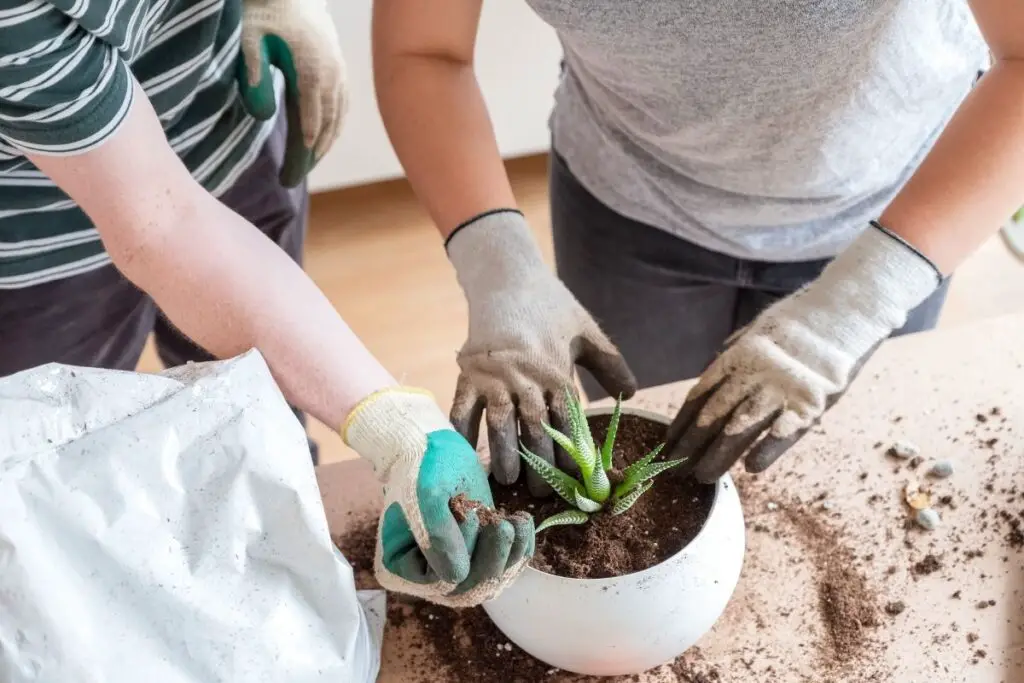
Importance of using suitable soil
Before you think of planting Haworthia, you must learn about their requirements.
In the case of soil requirements, you need to know the correct soil and its importance.
In their natural habitat, these succulents get all their essentials naturally.
But you need to deliver the basic needs properly in your garden or home.
And the soil is one of them.
For Haworthia, the best soil is the well-drained one.
Haworthia grows in deserts or under shady rocks in their native land.
They undergo a dry environment in such locations naturally.
They also prefer soil with a pH between 6.1-7.6.
Suitable soil plays a crucial role in the plant’s healthy growth.
Well-drained soil helps to avoid overwatering issues to a great extent.
Things to remember while choosing soil mix for Haworthia
When you select the soil, you must take care of some factors to make the soil suitable for Haworthia:
- The soil must have suitable porosity and drainage.
- The soil medium must not coagulate.
- The soil must retain moisture.
Signs you are using wrong soil for Haworthia
All the signs of watering issues might be the signs of wrong soil.
Water issues don’t always happen due to frequent or less watering.
Soil with poor drainage is also responsible for it.
So, when you find signs of water issues, check the soil quality with watering.
Recall the soil mixes you used for Haworthia.
Signs of wrong soil:
- Yellow, pale, and drooping leaves
- Brown and mushy leaves
- Soil staying damp for a long time
- Browning changes to blackening, indicating root rot.
- Poor development
- Dry soil due to too fast drainage
Don’t worry about the soil mixes if you are unfamiliar with them.
I will mention some appropriate recipes supporting suitable drainage and preventing underwatering or root rot.
What kind of soil is best for Haworthia?
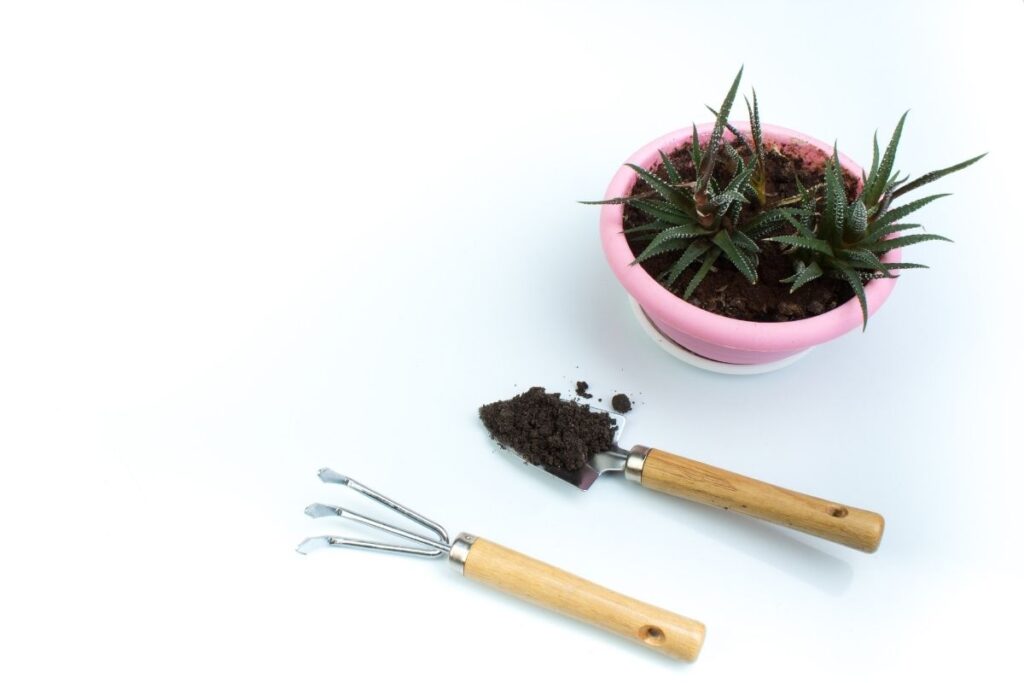
A well-drained, porous soil that retains moisture is the best kind of soil for Haworthia.
If you wish to plant them in your garden, directly in the ground, you need to inspect the soil first.
You need to confirm that the location doesn’t stay saturated all the time.
It happens if the spot is near a fountain or under rooftops.
Secondly, the area must be sunny so that the soil dries out quickly.
Then, you need to make an ideal soil mix and add it to the garden bed soil.
Select a suitable planting bed and dig the site to mix the ingredients needed by Haworthia.
Make sure that the soil bed is not too clayey.
Otherwise, the soil will stay damp for a long and result in rotting.
Also, avoid fine sand because it causes clogging.
Another critical factor for Haworthia is the pH level.
Haworthias like to grow in slightly acidic soil.
The best soil for Haworthia must have the following features:
- The soil must be porous and well-drained
- The soil must not solidify.
- The soil must retain moisture for one week.
- Sterilized soil would be great.
Such soil might not always be available.
But at least you choose soil that works at average levels.
The particle size matters a lot for good drainage and moisture retention.
When you water the plant, it moves towards the ground and gets held in the particles mixed with the soil by capillary action.
The tiny particles contain a bigger surface area. Thus, it holds moisture longer than the large particles.
Correct drainage is gained from particles ranging around 4 mm.
Particles larger than this size will reduce drainage compared to the tinier ones.
Moreover, it will be an obstacle to Haworthia root growth.
Haworthia’s roots grow deep.
A particle measured 2.5 approximately and below will result in the perched water table.
Here, the water will only evaporate but won’t drain. As a result, it can cause root rot.
In conclusion, larger particles don’t help much drainage, and tiny particles create perched water tables, causing rotting.
Thus, use a neutral size, which is 4mm approx.
The seedlings and immature plants will need smaller particles because of their ability to hold moisture.
It helps in good root development.
Looking for gardening supplies? We have tested 100's of products before recommending them to you guys. Check out our best pick below:
| Image | Gardening Supplies | Best Price? |
|---|---|---|
 Top
Top Top
Top | Raised Garden Bed Kit | Check On Amazon |
 | XLUX Soil Moisture Meter, Plant Water Monitor, Soil Hygrometer Sensor for Gardening, Farming, Indoor and Outdoor Plants, No Batteries Required | No Results |
 Top
Top Top
Top | 82 Pcs Garden Tools Set and Extra Succulent Tools Set | Check On Amazon |
 | Joeys Garden Expandable Garden Hose with 8 Function Hose Nozzle, Lightweight Anti-Kink Flexible Garden Hoses, Extra Strength Fabric with Double Latex Core, (50 FT, Black) | No Results |
 Top
Top Top
Top | Dual Chamber Compost Tumbler | Check On Amazon |
 Top
Top Top
Top | Sunnyglade Plant Stakes | Check On Amazon |
 Top
Top Top
Top | Organic Cold Pressed Neem Seed Oil | Check On Amazon |
 Top
Top Top
Top | Mighty Mint Gallon :-Insect and Pest Control Peppermint Oil | Check On Amazon |
 Top
Top Top
Top | Scotts DiseaseEx Lawn Fungicide | Check On Amazon |
 Top
Top Top
Top | Jacks Classic 20-20-20 All Purpose Fertilizer | Check On Amazon |
 Top
Top Top
Top | 30,000 Seeds Pollinator Attracting Wildflower Mixture | Check On Amazon |
 Top
Top Top
Top | Survival Vegetable Seeds Garden Kit-Over 16,000 Seeds | Check On Amazon |
Components to use and avoid for Haworthia soil
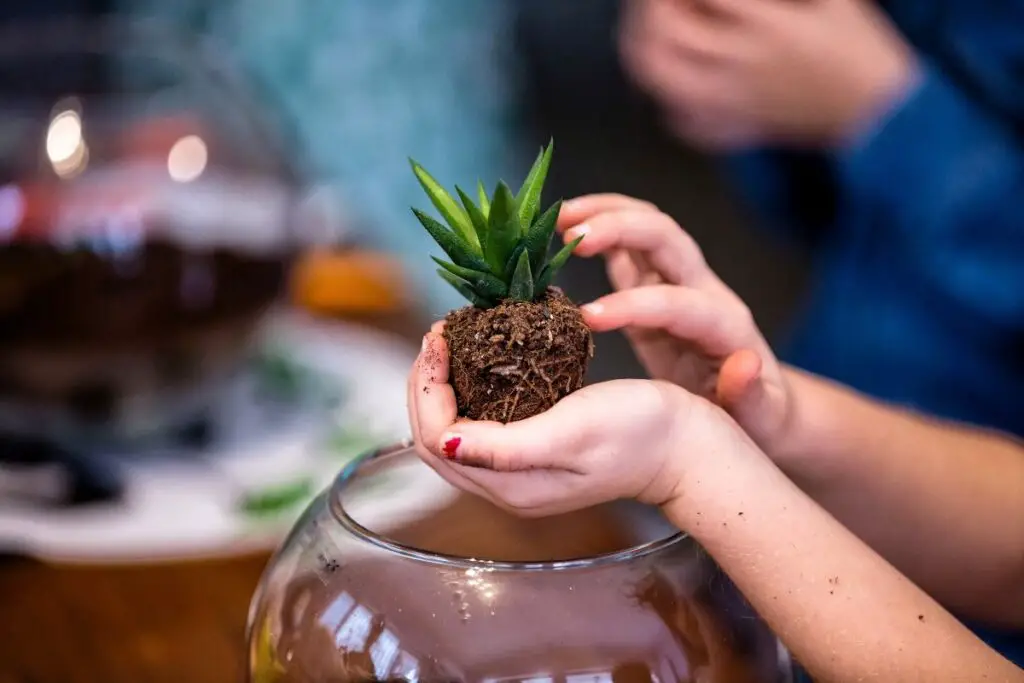
For making an ideal soil mix for Haworthia, certain ingredients are of great importance whereas, some are not useful.
Peat and vermiculite can decay and make the soil unhealthy.
So, don’t use such materials of Haworthia.
Below I mentioned some materials and their water retention quality.
By going through them, you can understand which materials to use and avoid for Haworthia.
It will be easier for you to make the best soil mix for this succulent:
- Very high water retention – calcined clay, calcined diatomaceous, coir, peat, vermiculite.
- High water retention – barks
- Medium water retention – scoria, perlite, pumice
- Very low water retention – granite and sand
Suitable soil mixes for Haworthia
Many ingredients are required to make an ideal soil mix for Haworthia.
The recipes I will discuss today can be added directly to the garden bed with soil.
For containers, just make the mix, add it to the pot and plant the succulent.
For ground planting, dig the planting site with a garden tool, add and mix the soil mixes well, and then plant them.
Now, let’s share some best soil recipes:
Recipe 1
Recipe 2
Equal parts of:
- 60% Coarse sand
- 40% Potting soil.
Recipe 3
- 50% gravel of appropriate size
- 50% of soil, coarse sand, and organic fertilizer
Recipe 4
- 80% pumice
- 20% coir, 1-3 mm approx.
Recipe 5
- 40% parts potting soil
- 40% parts small gravel
- 20% part perlite or pumice
Some recipes are soilless mixes.
So, if you are growing Haworthia in pots, you can try them.
Or, you can simply use commercial succulent and cactus potting mix.
When should I plant and repot/transplant Haworthia?
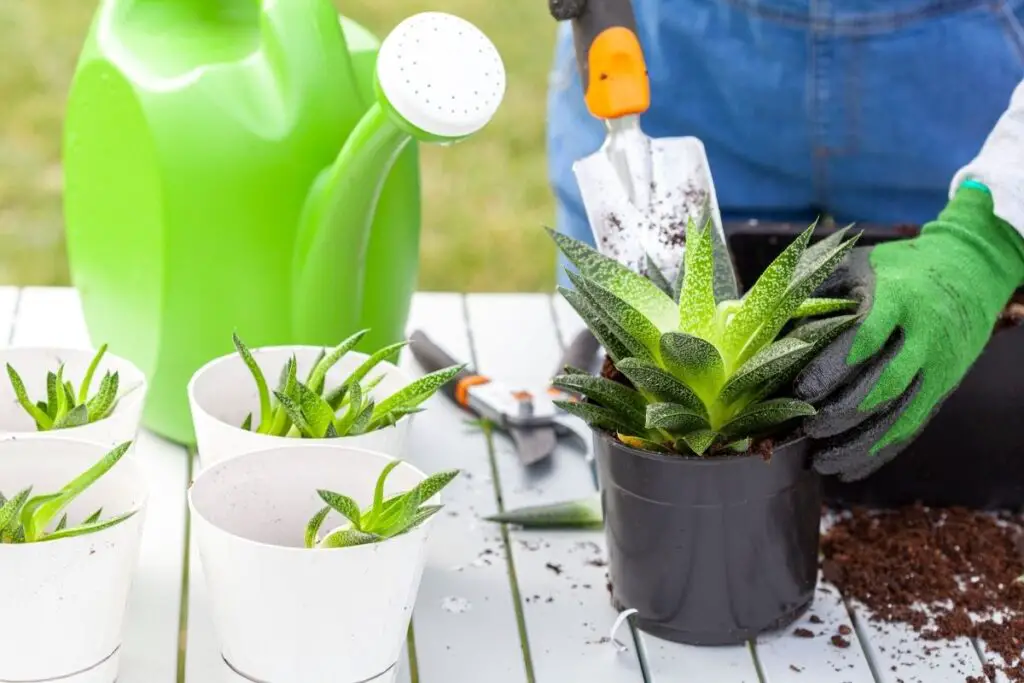
The best time to grow Haworthia is spring or early summer.
At this time of the year, Haworthia will grow actively.
Planting at such a time will help them grow at their average pace.
They are slow-growers and will take time to mature.
If your Haworthia is in the ground, sit back for 3 to 4 years.
They won’t need frequent transplanting.
They will stay in the same soil for these years and grow well, provided ideal growing conditions.
Since they are slow-growers, you don’t have to amend the soil quality, except for drainage.
Over the years, the quality of the soil mix materials might get depleted.
You can add some porous ingredients to improve drainage.
Inspect the roots and transplant them to a new location with favorable conditions in root rot.
Many people grow Haworthia in containers because they are succulents.
If you grow Haworthia in the pot, you can repot it every 2 to 3 years.
You can do it either in the spring or at the end of the winter season.
Since Haworthias are slow-growing succulents, you can worry less about their outgrowth.
However, it would help repot them with fresh soil to support healthy growth.
Planting or repotting during their growing seasons supports vigorous growth.
Moreover, repotting during these seasons will help the plant recover quickly from transplant shock.
Space between Haworthia
While growing Haworthia in the ground, keeping a space of about some inches will help them grow and spread well.
Haworthias grow 3 to 5 inches taller and broader.
Though they don’t spread much, keeping space is good.
Maintaining a space of at least 3-4 inches will encourage good airflow between the plants.
It further decreases humidity.
Reducing humidity by good airflow also promotes the prevention of fungal development.
How to grow and take care of Haworthia?
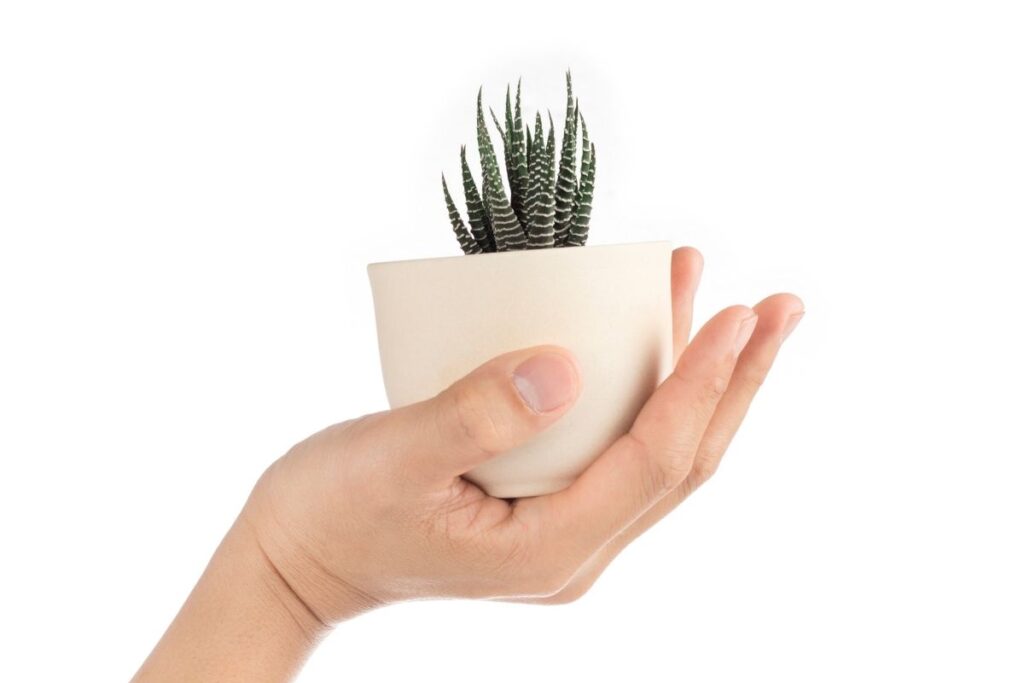
Haworthias are pretty easy to grow if you know their requirements appropriately.
They need a dry environment, bright sunlight, little water, and well-drained soil.
Below, I have shared some tips in brief so that you can get a rough draft about caring for Haworthia:
Choose a spot that receives bright sunlight.
Some Haworthias grow in deserts, and some grow under shady rocky beds.
The plant will begin to turn brown, red, or white due to too much sunlight.
Instead of changing their locations, fix shading nets if the location is too sunny.
Also read: How Much Light Does Haworthia Need? (Haworthia Light Requirements)
Water them depending on the seasons.
Their demand for watering frequency is quite different at different times of the year.
Instead of following any routine, add water when the soil feels dry.
Plant Haworthias in well-drained soil.
Try using the soil recipes I recommended. They are excellent in drainage and porosity.
Your Haworthias will rarely experience watering issues or root rot.
To improve drainage, you can also mix perlite or pumice separately in your soil bed.
Let them have their ideal temperature (65-75°F).
Haworthias will slow down their growth during extreme temperatures.
Since they are winter growers, they will go dormant in the summers when the temperature exceeds 80°F.
Also, protect them when temperatures go below 40°F.
Repot every 2-3 years.
Within these years, they will mature and even outgrow their pots.
Even if they don’t outgrow, still repot them with fresh soil to promote healthy growth.
Final thoughts
Haworthias enjoy growing in a soil medium that can drain water and even hold moisture for some days.
Good drainage is essential.
Being succulents, they are drought-tolerant and hold moisture in their leaves.
Moreover, they naturally experience dry conditions; otherwise, staying damp always results in root rot.
That is why drainage is an essential part of their life.
Along with that, use materials with 4mm particles.
It helps in root growth and drainage, again.
Both big and small particles will not improve drainage. Moreover, the root doesn’t develop much in bigger particles.
Soil for Haworthia – FAQs
Does Haworthia have deep roots?
Haworthia roots are different from other succulents. The roots are deep, fleshy, and large.
These roots store water and food, which the plant further uses to stay strong and healthy.
Due to such root depth, you must use the recommended particle size for them.
Some of the roots reabsorb the older roots.
As a result, the present roots contain hollow husks on their bodies while growing new roots.
Haworthia also contains some shallow roots.
How much water should I give my Haworthia?
You can water the Haworthia whenever the soil feels dry.
After watering, approximately after 2-3 weeks, the soil will go dry.
If the soil is not yet dry, wait for 1-2 days more and check again.
Don’t water too frequently. Watering depends on the soil too.
If you use the recommended soil recipes, there are fewer chances of overwatering or root rot in the Haworthia.
Also read: How Often To Water Haworthia? (Haworthia Water Requirements)
Reference: The Haworthia Society, Botanical Studies, University of Wisconsin-Madison, Sciencedirect, Researchgate, Haworthia Study.
